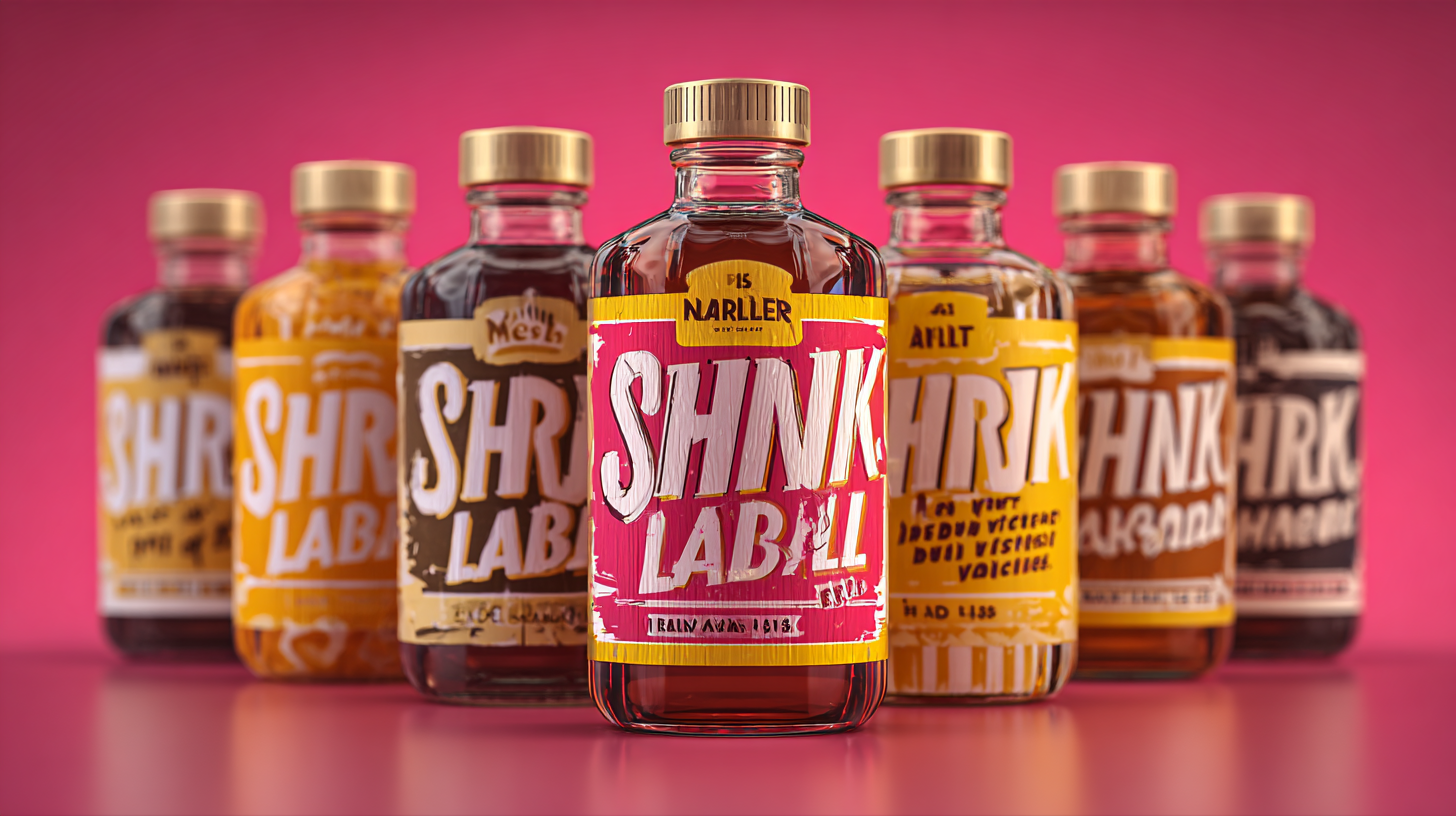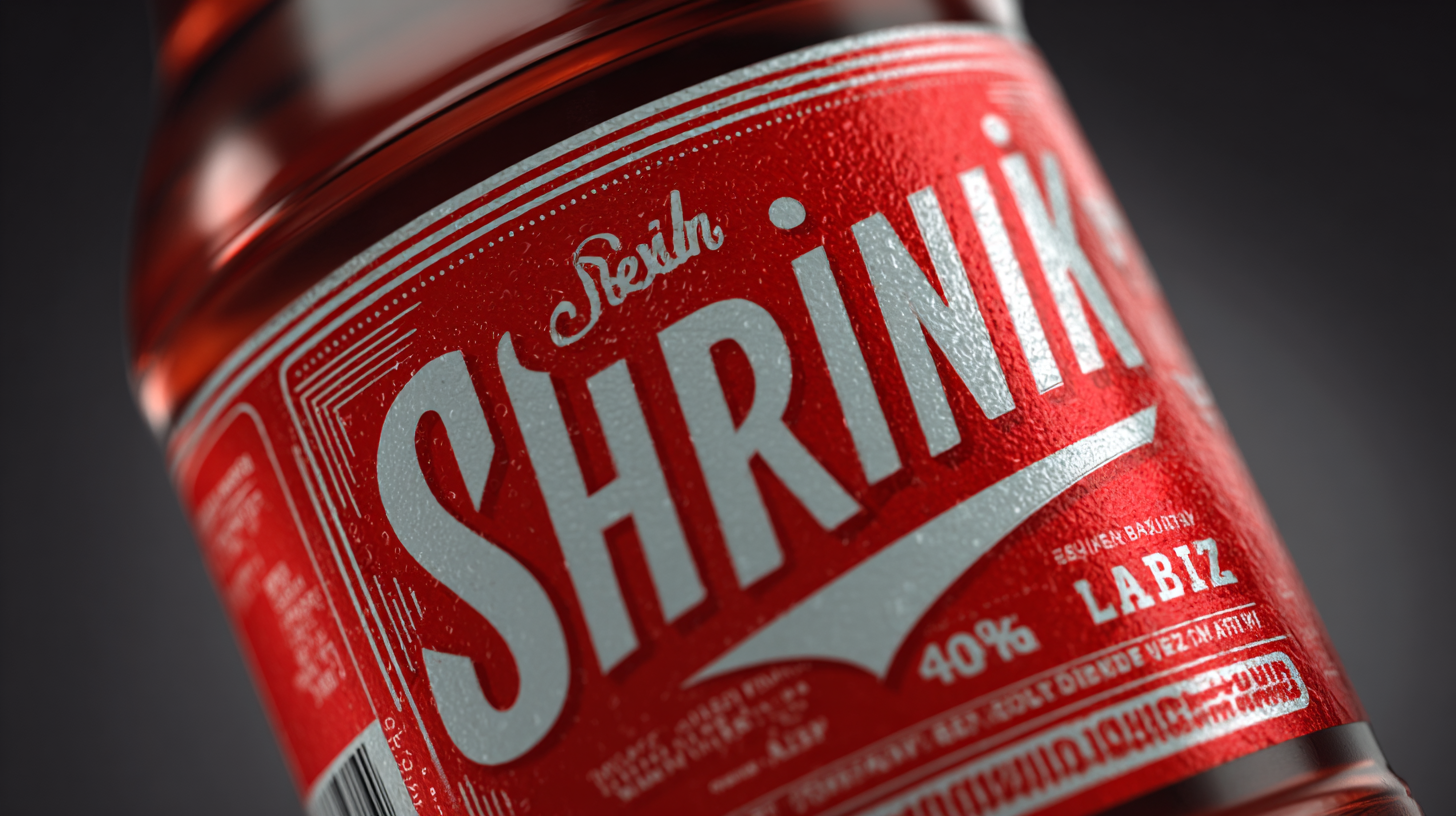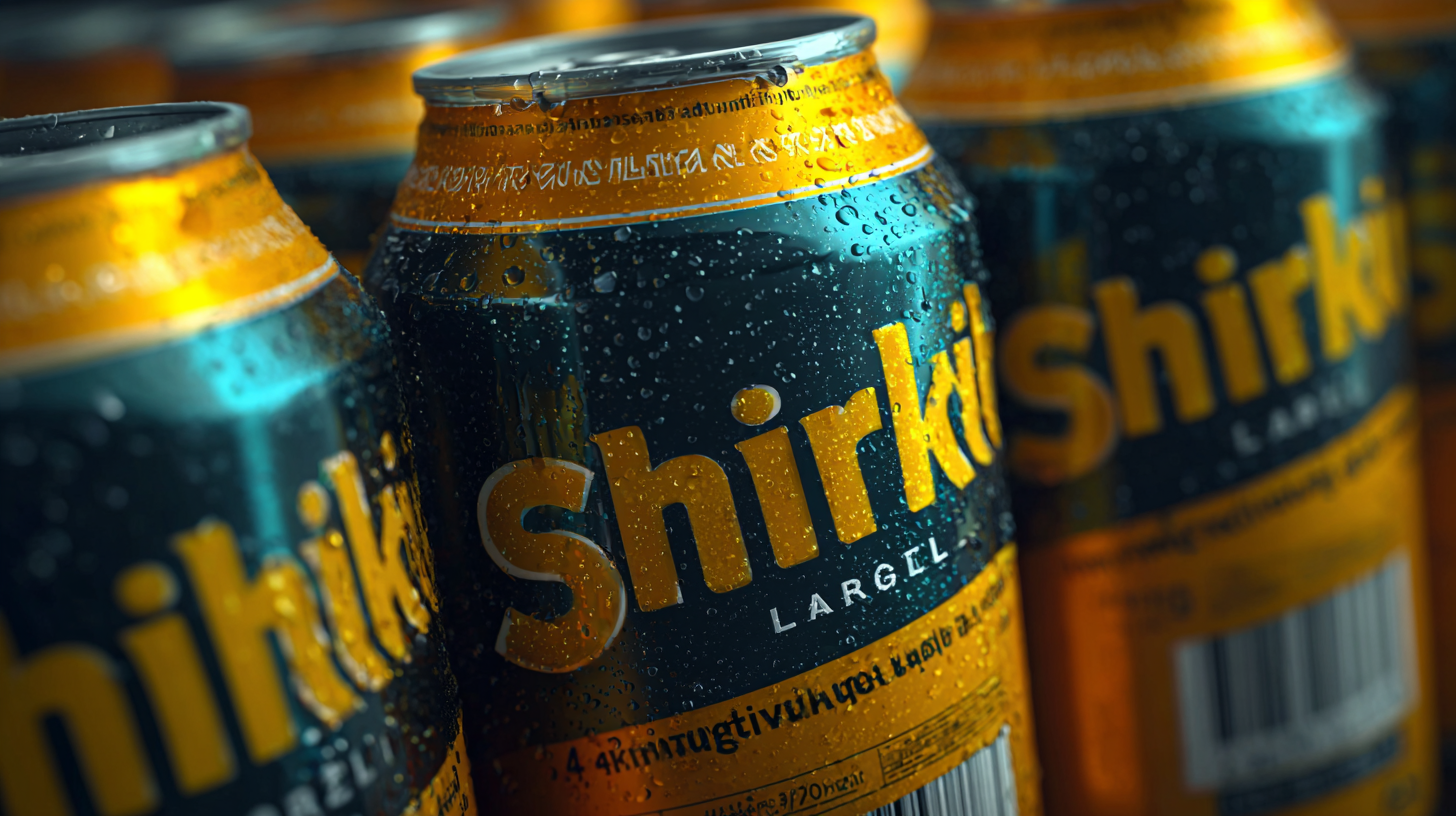Maximizing Brand Visibility with the Best Shrink Label Advantages
In today's highly competitive market, maximizing brand visibility is paramount, and one of the most effective tools at a brand's disposal is the use of shrink labels. According to a recent report by Smithers Pira, the shrink sleeve labels market is projected to reach $19.6 billion by 2025, driven by their ability to provide 360-degree branding opportunities and superior shelf impact.
 With advancements in printing technology and material efficiency, shrink labels have now become a favorite among brands looking to enhance their visibility while maintaining cost-effectiveness. This ultimate guide will delve into the key advantages of shrink labels, exploring how they not only elevate product presentation but also contribute to brand recognition and consumer engagement in a visually crowded retail environment.
With advancements in printing technology and material efficiency, shrink labels have now become a favorite among brands looking to enhance their visibility while maintaining cost-effectiveness. This ultimate guide will delve into the key advantages of shrink labels, exploring how they not only elevate product presentation but also contribute to brand recognition and consumer engagement in a visually crowded retail environment.
Understanding the Importance of Shrink Labels in Brand Marketing
Shrink labels have emerged as a pivotal tool in brand marketing, offering a unique combination of functionality and visual appeal. Recent studies indicate that over 70% of consumers report that packaging influences their purchasing decisions. This statistic highlights the critical role that shrink labels play in enhancing brand visibility. Not only do these labels provide a canvas for vibrant graphics and essential product information, but they also ensure a perfect fit around irregularly shaped containers, thereby maximizing shelf impact.
**Tip:** To fully leverage shrink labels, consider using bold colors and clear fonts that align with your brand identity. Research suggests that products with eye-catching packaging can increase sales by up to 30%.
Furthermore, shrink labels contribute to product protection and tamper evidence, which are significant in today’s market where safety and integrity are paramount. According to a report by Smithers Pira, the shrink sleeve market is projected to grow at a CAGR of 5.1% through 2025. This growth reflects the increasing recognition of shrink labels not just as packaging, but as a crucial component of marketing strategy.
**Tip:** Always test your packaging designs through consumer feedback to ensure they resonate well with your target audience, as even subtle changes can significantly affect consumer perception and engagement.
Maximizing Brand Visibility with the Best Shrink Label Advantages
| Advantage |
Description |
Impact on Brand Visibility |
Usage Examples |
| Visual Appeal |
Shrink labels can conform to the shape of the product, providing a dynamic look. |
Enhances shelf presence and attracts consumer attention. |
Bottles, jars, and cans. |
| Cost-Effective |
Shrink labels often require less material than traditional labels while being effective. |
Reduces packaging costs while maintaining or enhancing brand visibility. |
Food and beverage packaging. |
| Durability |
Shrink labels are resistant to moisture, chemicals, and abrasions. |
Increases longevity on shelves, promoting brand recognition over time. |
Household cleaning products and cosmetics. |
| Versatility |
Can be applied to various shapes and sizes, accommodating diverse products. |
Allows brands to package unique items while still being impactful. |
Pharmaceuticals, electronics, and personal care items. |
| Tamper-Evidence |
Shrink labels can provide tamper-evident features for consumer safety. |
Increases consumer trust in the brand and product integrity. |
Food packaging, supplements, and sensitive products. |
Key Advantages of Using Shrink Labels for Enhanced Brand Visibility
Shrink labels have become a powerful tool for brands seeking to enhance their visibility in a crowded marketplace. One of the primary advantages of using shrink labels is their ability to conform tightly to a product's shape, creating a seamless look that attracts consumer attention. This customized fit not only highlights the product's design but also improves shelf presence, ensuring that it stands out among competitors.
In addition to their aesthetic appeal, shrink labels offer excellent opportunities for brand messaging. With ample space for vibrant graphics and informative text, brands can convey their unique selling propositions directly on the packaging. This is particularly beneficial in retail environments where quick brand recognition can drive impulse purchases. Moreover, shrink labels are often resistant to moisture and abrasion, ensuring the longevity of branding elements and reducing the likelihood of damage that can detract from brand perception.
How to Choose the Right Shrink Label Material for Your Product
When selecting the right shrink label material for your product, it is crucial to consider factors such as the intended application, product type, and environmental conditions. One popular choice for shrink labels is polyolefin, known for its versatility and strong clarity, making it ideal for a wide range of products. This material not only provides an attractive finish but also offers excellent durability against moisture and temperature changes, ensuring that your branding remains intact throughout the product's life cycle.

Another option to explore is PVC shrink film, which is often favored for its cost-effectiveness and superior shrinking capabilities. PVC labels are especially effective for contouring to various shapes and sizes, providing a snug fit that enhances the overall look of the product. However, it is essential to note that PVC may not be as environmentally friendly as alternative materials, so brands focused on sustainability may opt for biodegradable options like PLA or other compostable films. By carefully evaluating the properties and applications of these materials, you can maximize brand visibility while also aligning with your business’s values and the expectations of your customer base.
Design Tips for Eye-Catching Shrink Labels that Attract Customers
 When it comes to creating eye-catching shrink labels, the design plays a crucial role in attracting consumers. One effective strategy is to utilize bold colors and striking graphics that resonate with your brand’s identity. Bright hues can instantly draw the eye, particularly when contrasted against the packaging. Additionally, incorporating imagery that conveys the product’s key benefits can effectively communicate its value proposition, making it more appealing to potential buyers.
When it comes to creating eye-catching shrink labels, the design plays a crucial role in attracting consumers. One effective strategy is to utilize bold colors and striking graphics that resonate with your brand’s identity. Bright hues can instantly draw the eye, particularly when contrasted against the packaging. Additionally, incorporating imagery that conveys the product’s key benefits can effectively communicate its value proposition, making it more appealing to potential buyers.
Typography is another essential element in shrink label design. Choosing the right font can enhance readability while also reflecting the personality of the brand. For instance, modern and stylish fonts might work well for beauty products, while a traditional typeface may be suitable for artisanal goods. It’s also important to maintain a hierarchy in text size to guide customers through the information, ensuring that the brand name and product details stand out without overwhelming the viewer.
Finally, consider the shape and finish of your shrink labels. A unique label shape can differentiate your product on the shelf, while finishes like matte or gloss can influence tactile and visual appeal. A matte finish, for instance, can lend an air of sophistication, while gloss can make your labels pop with vibrancy. By thoughtfully designing shrink labels that combine these elements, brands can significantly enhance their visibility and attract more customers.
Industry Standards and Best Practices for Shrink Label Application
Shrink labels have become an indispensable tool in modern packaging, enabling brands to enhance their visibility and engage consumers effectively. According to a recent report by Smithers Pira, the global market for shrink sleeves is projected to grow at a CAGR of 4.6%, reaching $9.58 billion by 2025. This growth underscores the industry's shift towards labels that offer greater flexibility and aesthetic appeal, allowing brands to stand out on crowded shelves.
Adhering to industry standards and best practices in shrink label application is crucial for maximizing brand visibility. The use of high-quality materials is paramount; for instance, PETG and PVC are favored for their durability and printability. Additionally, ensuring proper label heat application is essential to avoid issues like bubbling or peeling, which can detract from a product's appeal. According to AWA Alexander Watson Associates, nearly 50% of packaging professionals acknowledge that improper label application can negatively impact brand perception. Employing automated application systems can further streamline the process, reducing errors and enhancing consistency, thereby contributing to a polished and professional presentation that resonates with consumers.